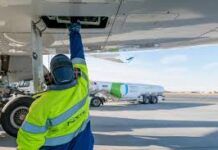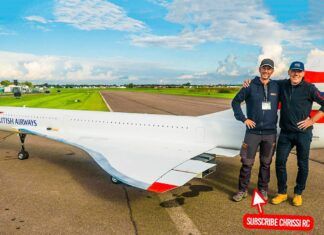The coming horde of very light jets (VLJs) will clog the skies, crowd runways, overtax the ATC system, increase the risk of airline delays and curdle fresh milk. Or it won’t. That — except for the curdled milk part — pretty much sums up the arguments for and against what many are saying will be an unprecedented increase in the number of jet airplanes operated in U.S. airspace and, by extension, user fees. Those arguments, on both sides of the “issue,” have been made in a recent hearing before the U.S. Senate and, of course, in the general media. Similarly, a recent hearing in the U.S. House of Representatives discussed various FAA financing options but — amazingly — mostly avoided VLJs. Leading the pro-user-fee charge and warning against the milk-curdling dangers of VLJs has been none other than the domestic airline industry, usually with the carriers’ trade group, the Air Transport Association (ATA), walking point. The Senate hearing, held Sept. 28, was convened to learn whether the National Air Transportation System will accommodate the coming crop of VLJs — dubbed “the mosquito fleet” by U.S. Sen. Ted Stevens (R-Alaska). Jack Pelton, chairman of the General Aviation Manufacturers Association (GAMA), and chairman, president and CEO of Cessna Aircraft Company, pointed out that VLJs will not darken the skies, as many have predicted. Instead, Pelton said he believed the VLJ market would develop like every other turbine-powered GA aircraft: in an evolutionary, rather than revolutionary, way. The introduction of VLJs will be at a rate in which they will be transparently and smoothly absorbed into the system, he added.
Pelton also emphasized that VLJs will not place an undue burden on ATC or increase congestion at busy airports. Concerns about integrating VLJ operations with other aircraft have been greatly exaggerated. VLJ operators have a powerful incentive to avoid the traffic congestion and delays found at the airports dominated by the airlines, said Pelton. In the process, VLJs will provide service to many underutilized and neglected markets. Also appearing at the hearing were Vern Raburn, president and CEO of Eclipse Aviation; Edward Iacobucci, president and CEO of DayJet Corporation; and Matthew Andersson, senior aviation consultant with CRA International. For its part, the FAA tended to echo Pelton’s comments at the hearing. Nicholas Sabatini, associate administrator for Aviation Safety, and Michael Cirillo, vice president of Systems Operation Services within the FAAs Air Traffic Organization, told the Senate Subcommittee on Aviation that the agency has the capability to safely introduce all aircraft into the system, no matter the size, speed or performance. VLJs will be assimilated into the system in an orderly fashion, said Sabatini. Not to be outdone, the ATA chose that same day to float a story in the general media contending that VLJs would pose a significant burden on the U.S. aviation system, interfering with the operations of the commercial airlines. In response, NBAA President and CEO Ed Bolen took the ATA to task, quoting FAA Administrator Marion Blakey as saying her agency doesn’t expect to have any problems integrating VLJs into the airspace. The development of VLJ aircraft is good news on many levels, Bolen said. Their introduction produces high-skill manufacturing jobs. They will help make many small and mid-sized companies more competitive. And, they will strengthen aviation services for many small communities. Those benefits should be the focus of discussion about VLJs. Look for more pushing and shoving on this topic — from both sides — as the NBAA annual meeting and convention gets underway next week in Orlando.

































